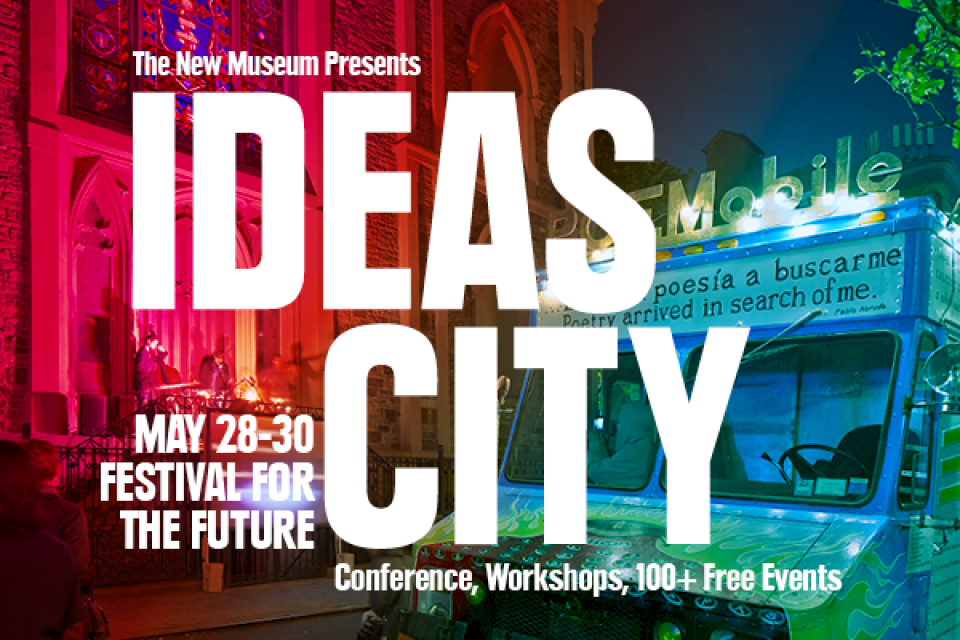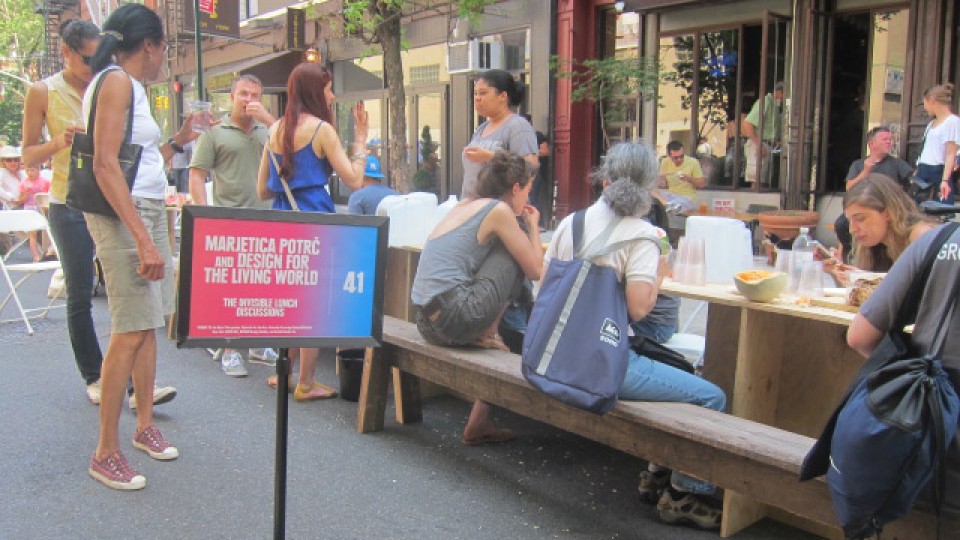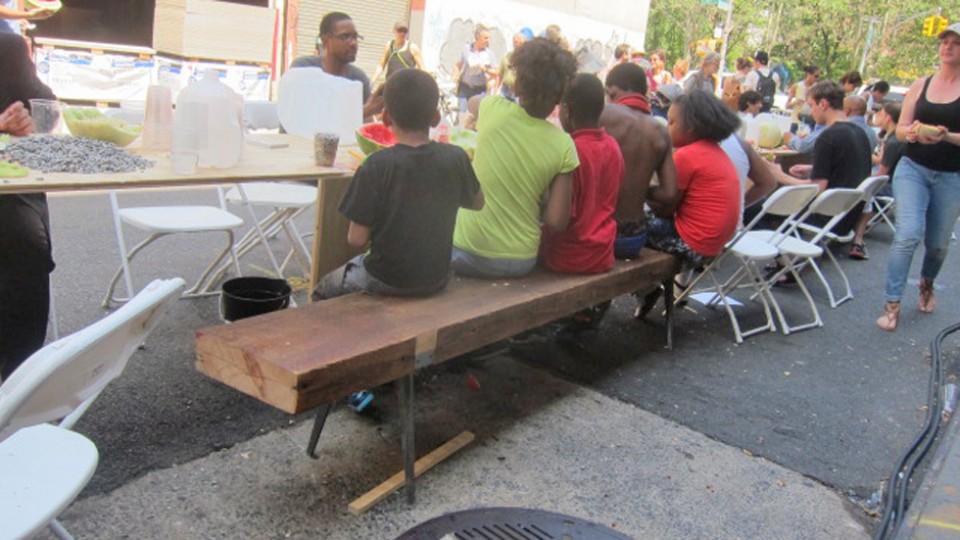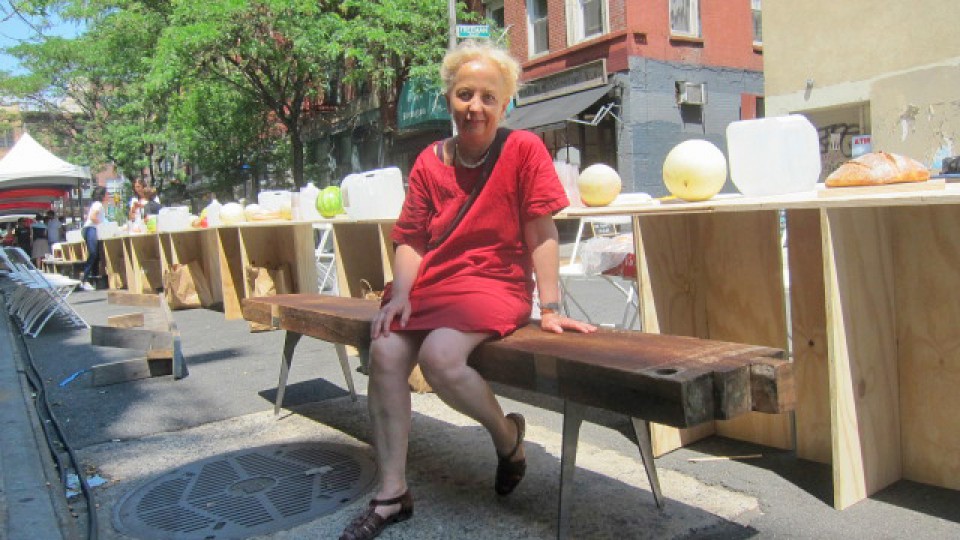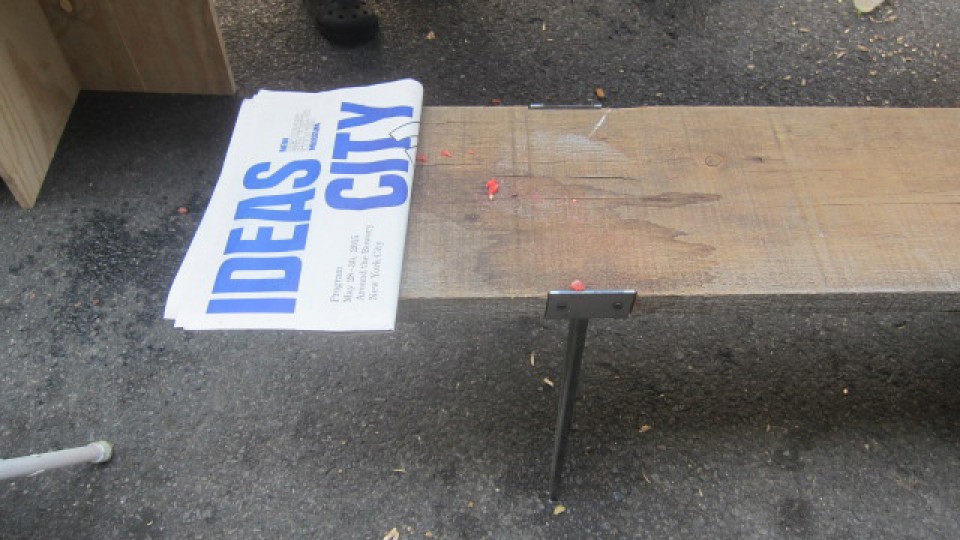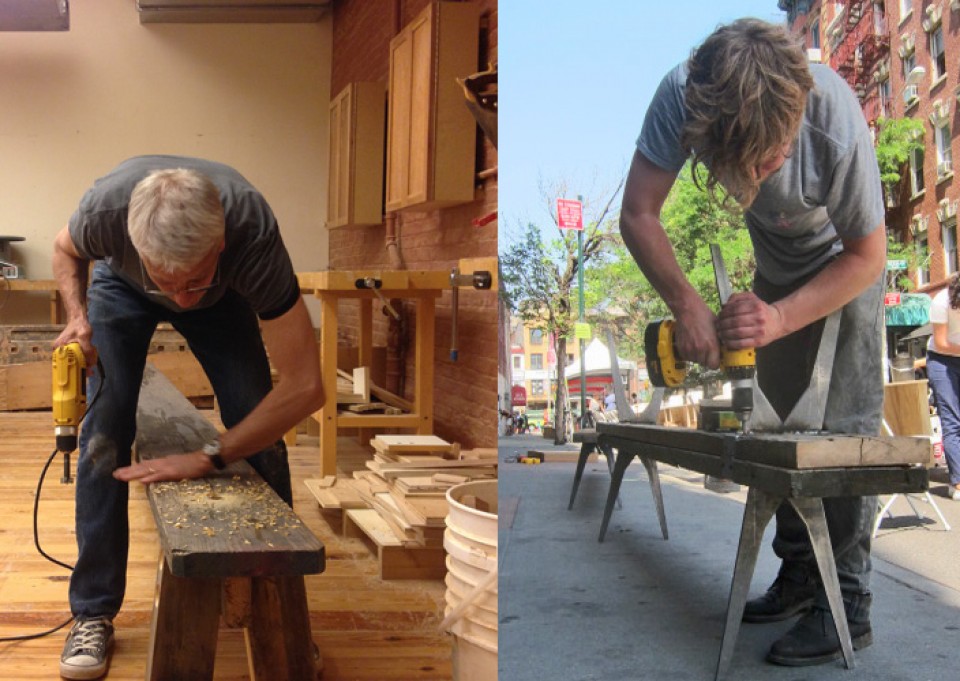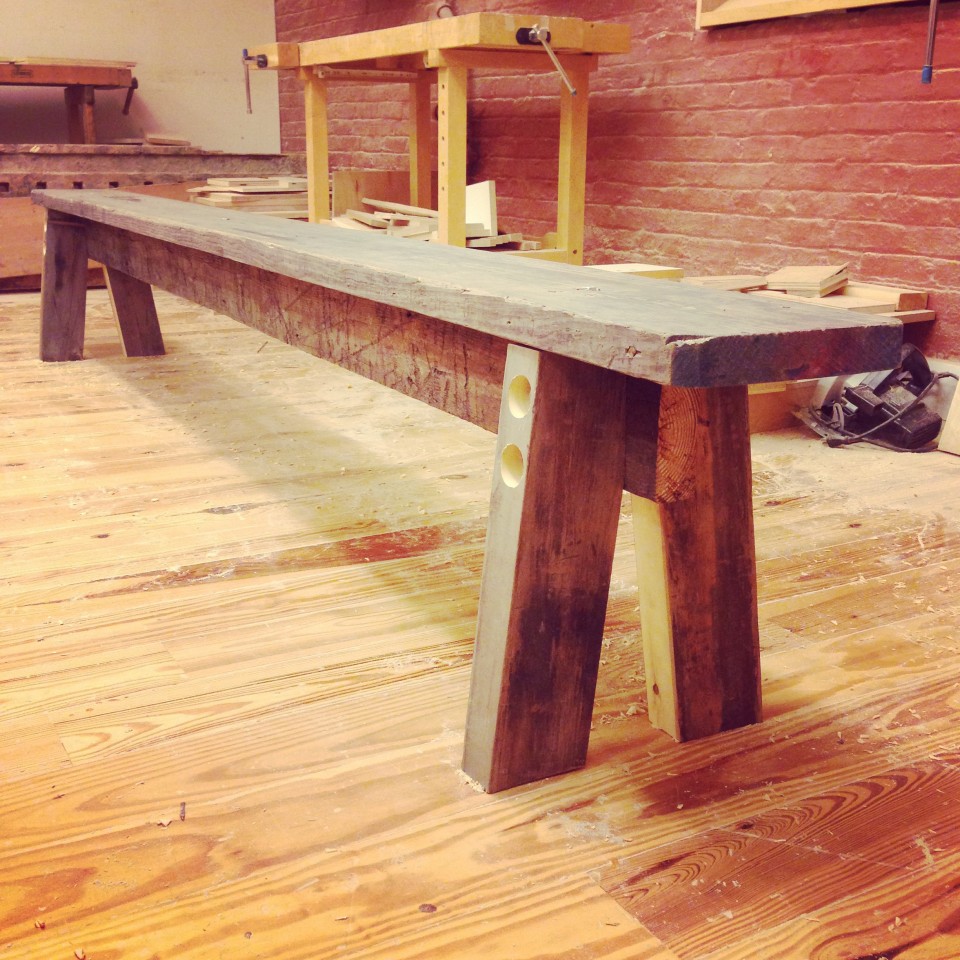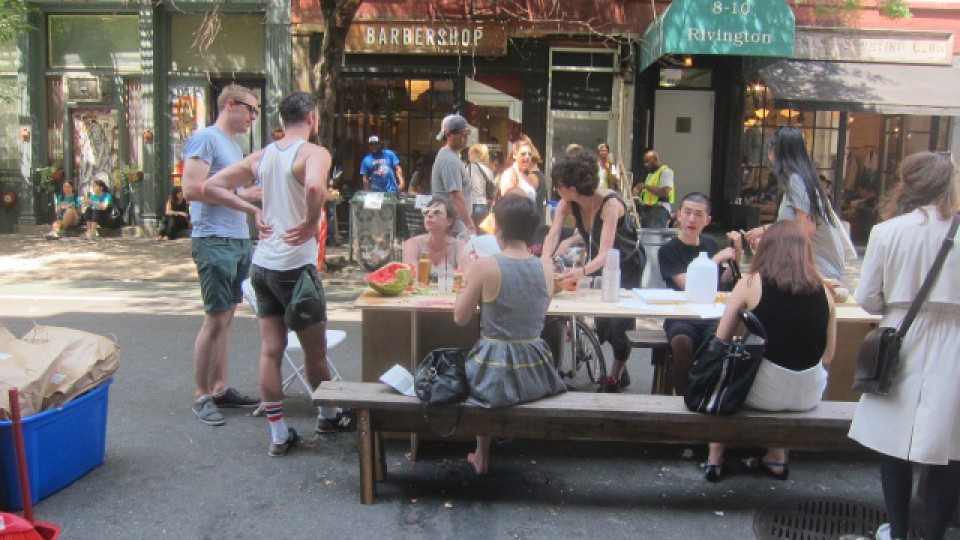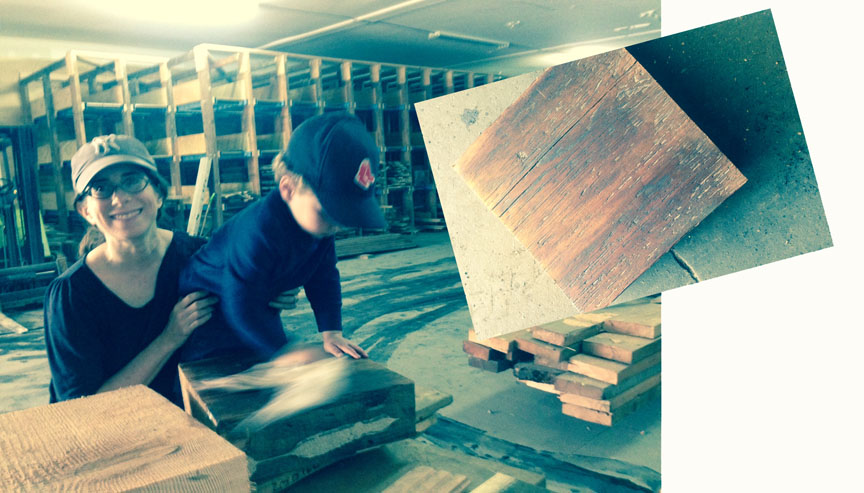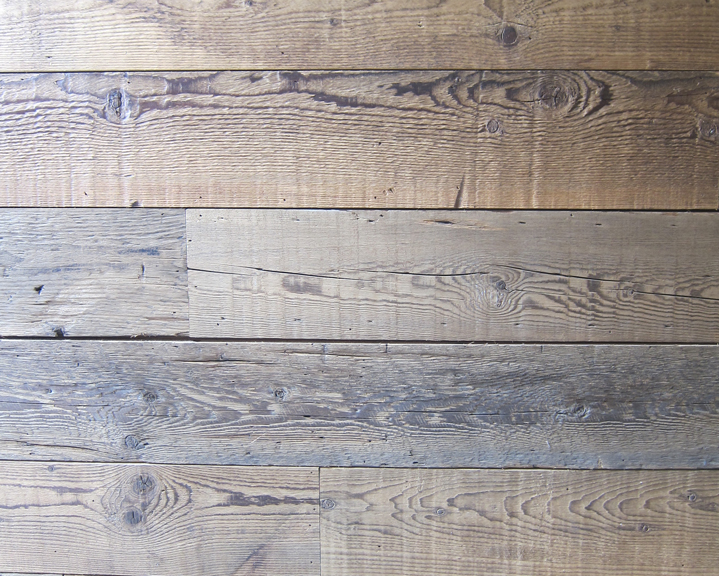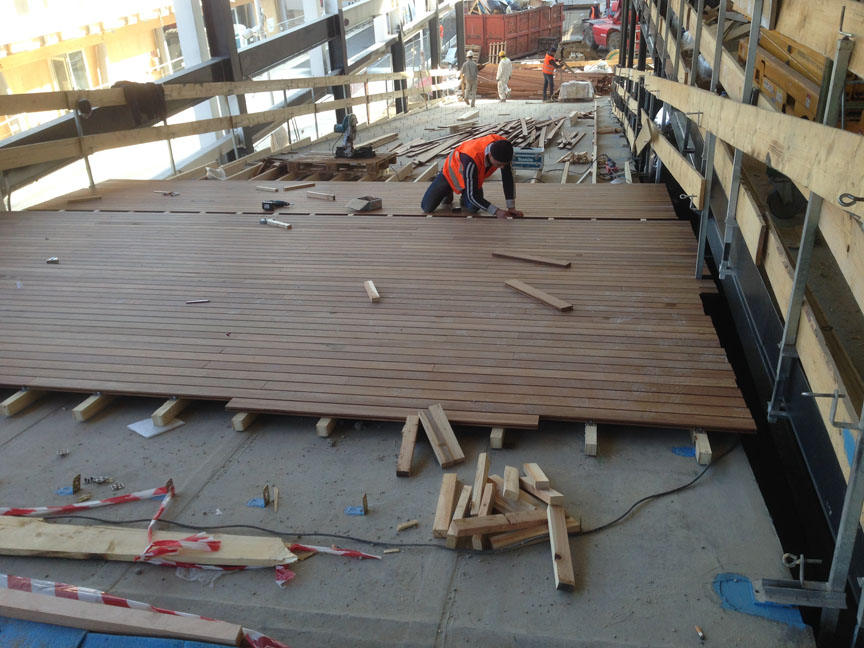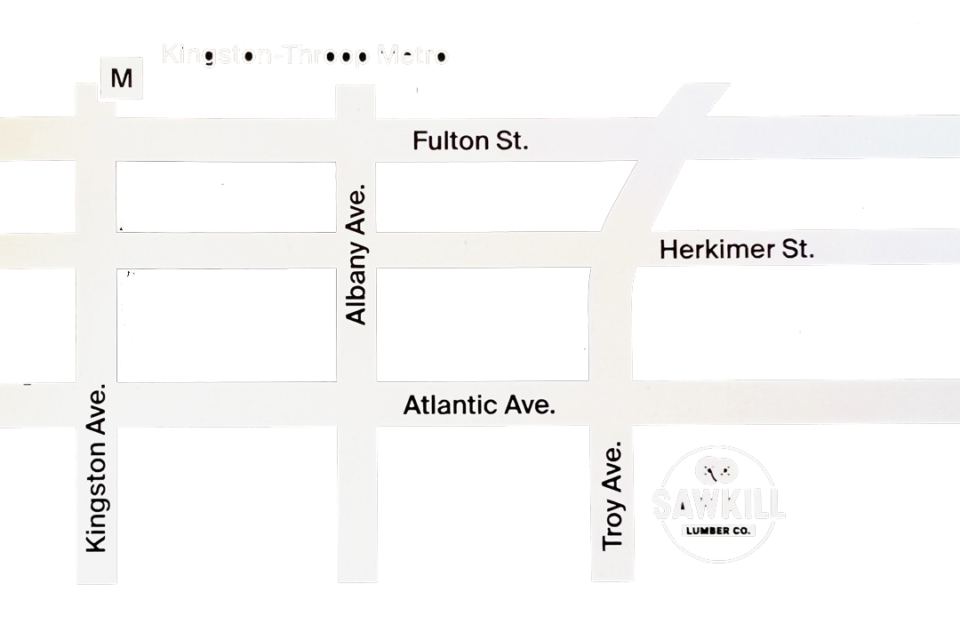Reclaimed wood joists, reused as joists, is surprisingly uncommon. Naily old lumber, dusty and often surface checked, can easily fail the grade on first glance. But these 3 x 10’s are sound enough – at least for sistering a row house renovation. They occupy the rare middle ground between being dumped at the landfill (or chipped) or re-milled into high end flooring or furniture.
In this video, Jim Hartin of Blueline Construction, provides an overview of the reclaimed joist stock that is lined up for reuse at the passive house project, 158 Clifton Pl. in Brooklyn.
The collection includes a range of species – antique Red Spruce, Longleaf Pine, Eastern Hemlock and Douglas Fir – sourced from a variety of 19th to late-20th c. NYC buildings. The most recent is an 1883 Tribeca warehouse at 443 Greenwich St., once home to the Novelty Toy Co. (they introduced the first teddy bear), the American Steel Wool Co. and a book bindery. The penthouse at the new development, once framed with the antique lumber, hit the market at $51m.
